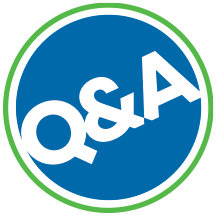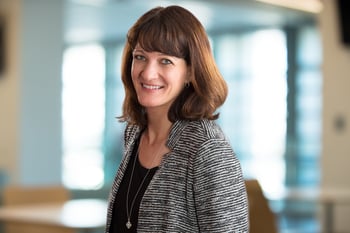
Susan Harris came to Citizens about four years ago after several years of working in the environmental, health, and safety fields improving programs and processes, most recently at Roche Diagnostics. She holds degrees in civil and environmental engineering. Below, she shares more about how she sees Citizens’ continuous improvement programs helping us achieve One Company, One Culture.
 1. We use several terms (e.g., continuous improvement, Quality, CLASS) when discussing the work of your area. Can you break it down for us?
1. We use several terms (e.g., continuous improvement, Quality, CLASS) when discussing the work of your area. Can you break it down for us? Quality is a core value at Citizens. We are focused on continuously improving our products, our services, and ourselves. In an environment where technology, customer expectations, costs, and other aspects of our work are always changing, continuous improvement is a mindset where every employee is always looking for opportunities for process improvements to help us provide safe and reliable services to our customers. The tools and methodologies we use for continuous improvement are Lean (removing wastes) and Six Sigma (which aims for error-free performance). CLASS is the acronym for Citizens Lean and Six Sigma.
2. For those employees who were not around when CLASS started, can you give us a brief background?For more than 30 years, Citizens used the Malcolm Baldrige Criteria for its performance excellence quality framework. Leadership continued to examine Citizens’ core value of Quality to address new and existing challenges with affordability and the need for increased knowledge management. That led to a decision in 2016 to focus our Trust-wide efforts on continuous improvement through Lean and Six Sigma, with the intention of taking us “from good to great.” That’s when the term “CLASS” was coined.
3. Why is the continuous improvement program important at Citizens? How do you see it helping us achieve One Company, One Culture?CLASS is an important complement to the culture at Citizens, and to our commitment to customers. Lean in particular is based on respect for people, understanding work at the front line, and teamwork, all of which are already deeply rooted at Citizens. Continuous improvement helps us look across departments for impacts to cost and efficiency. In breaking down silos, we are working toward One Company, One Culture.
4. What are some examples you have seen of employees demonstrating One Company, One Culture?Employees use the standardized tools, problem-solving approaches, and templates instead of each department doing their own thing, which helps demonstrate One Company, One Culture. Since CLASS began, employees have completed four Black Belt projects, 10 Green Belt projects, 100 Yellow Belt projects, and 16 Advanced Yellow Belt projects using standardized approaches and documentation. A total of 118 leaders, including the entire Officer group, have gone through the Lean Leadership course for a Blue Belt certification.
A great example of departments working together is the assortment of improvements made to water meter testing and replacement. For several years, a team including representation from Underground Engineering and Construction, Shared Field Services, Water Distribution, and Supply Chain has worked together to create documentation on water meter specification and improve processes on meter testing and replacement. Employees have completed two Yellow Belt projects as part of the overall collaborative effort, and four additional projects are in progress.


